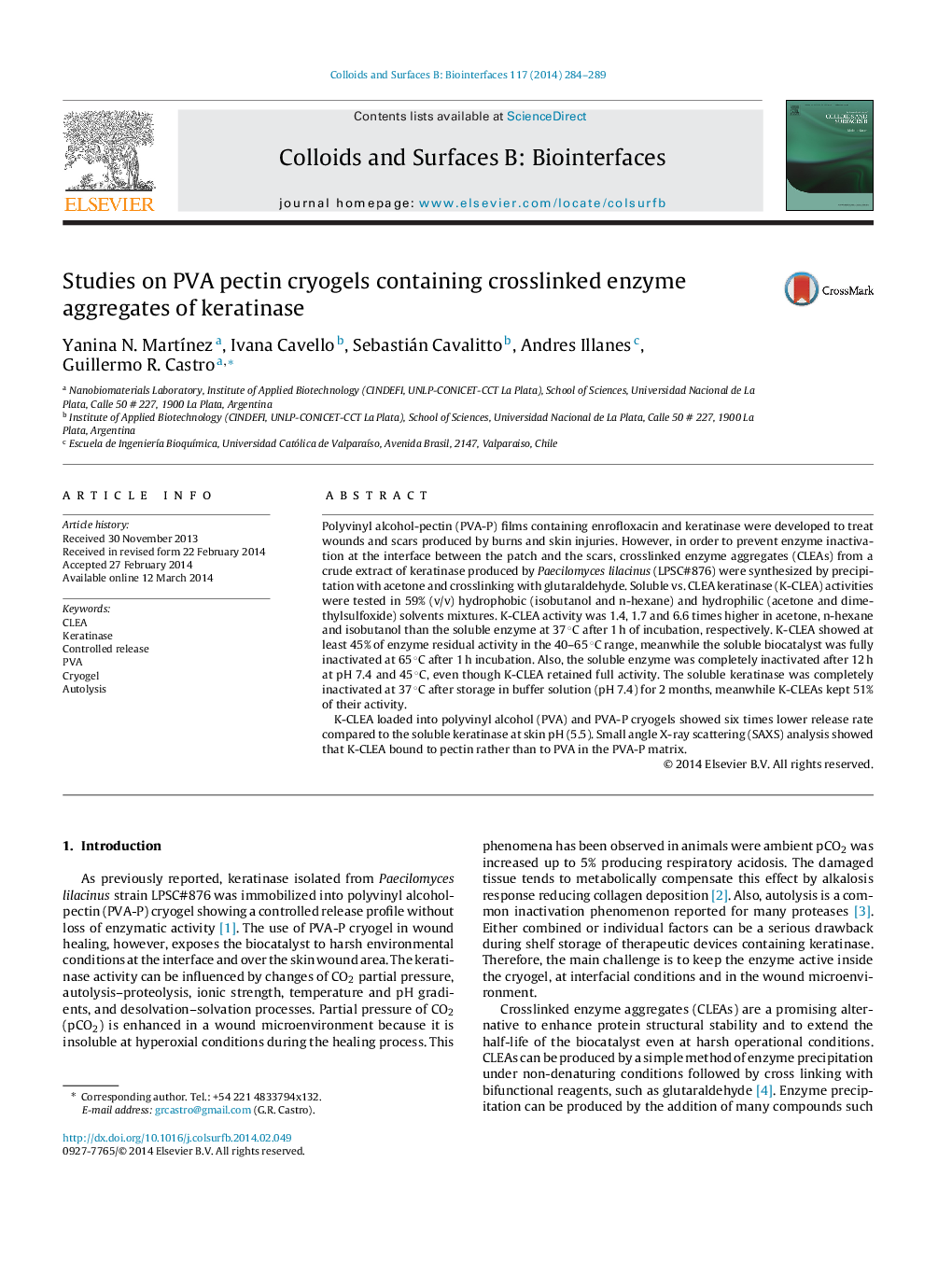| Article ID | Journal | Published Year | Pages | File Type |
|---|---|---|---|---|
| 599918 | Colloids and Surfaces B: Biointerfaces | 2014 | 6 Pages |
•Keratinase CLEA prevents enzyme inactivation against enzyme denaturants like solvents, high temperature and autolysis.•Immobilization of CLEAs into PVA-P cryogel retarded the release in comparison with free enzyme.•The control of K-CLEA release is based on the pectin present in the PVA film.•K-CLEAs keep 51% of their activity after 2 months at 37 °C.•K-CLEA activity was 1.4, 1.7 and 6.6 times higher in acetone, n-hexane and isobutanol than the soluble enzyme.
Polyvinyl alcohol-pectin (PVA-P) films containing enrofloxacin and keratinase were developed to treat wounds and scars produced by burns and skin injuries. However, in order to prevent enzyme inactivation at the interface between the patch and the scars, crosslinked enzyme aggregates (CLEAs) from a crude extract of keratinase produced by Paecilomyces lilacinus (LPSC#876) were synthesized by precipitation with acetone and crosslinking with glutaraldehyde. Soluble vs. CLEA keratinase (K-CLEA) activities were tested in 59% (v/v) hydrophobic (isobutanol and n-hexane) and hydrophilic (acetone and dimethylsulfoxide) solvents mixtures. K-CLEA activity was 1.4, 1.7 and 6.6 times higher in acetone, n-hexane and isobutanol than the soluble enzyme at 37 °C after 1 h of incubation, respectively. K-CLEA showed at least 45% of enzyme residual activity in the 40–65 °C range, meanwhile the soluble biocatalyst was fully inactivated at 65 °C after 1 h incubation. Also, the soluble enzyme was completely inactivated after 12 h at pH 7.4 and 45 °C, even though K-CLEA retained full activity. The soluble keratinase was completely inactivated at 37 °C after storage in buffer solution (pH 7.4) for 2 months, meanwhile K-CLEAs kept 51% of their activity.K-CLEA loaded into polyvinyl alcohol (PVA) and PVA-P cryogels showed six times lower release rate compared to the soluble keratinase at skin pH (5.5). Small angle X-ray scattering (SAXS) analysis showed that K-CLEA bound to pectin rather than to PVA in the PVA-P matrix.
Graphical abstractFigure optionsDownload full-size imageDownload as PowerPoint slide
